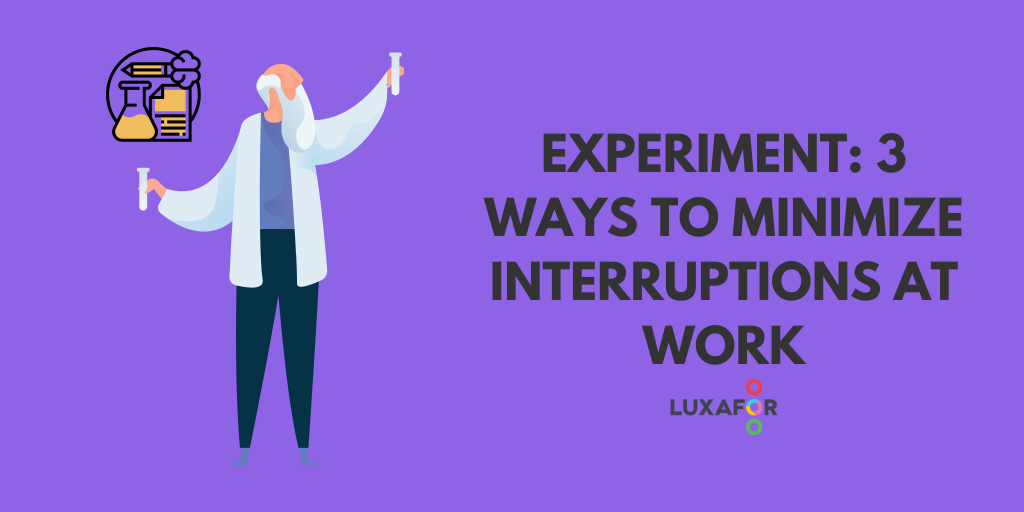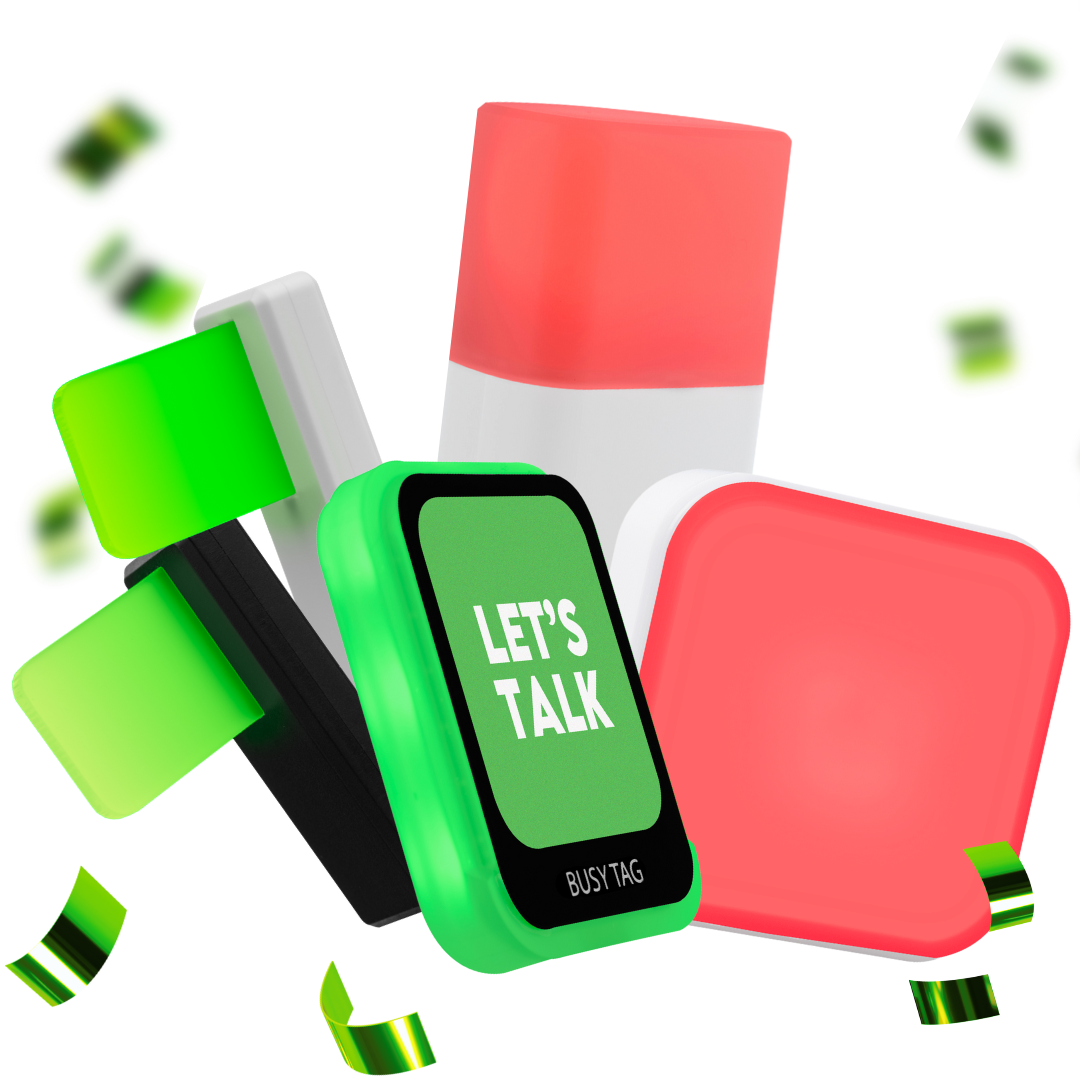Experiment: 3 Ways to Minimize Interruptions at Work
Did you know that the average person gets interrupted every 3 minutes at work? From coworkers that want to chat, to incoming emails, to Facebook notifications, there’s no shortage of distractions in today’s workplace.
Working in an open office space can be especially distracting, as there’s nothing separating you from everybody else. And we at GreyNut can attest to that. Our open office plan allows for plenty of collaboration and communication, but we’ve all longed for some peace and quiet at some point.
The good news is that there are plenty of tools that can minimize interruptions. Our sister company, MapOn, decided to experiment with 3 of them: headphones, a Luxafor Flag, and a paper “do not disturb” sign. Here are the rules of the experiment:
- 3 programmers (who are busy and prone to interruptions) participated. They were each given one tool to try out.
- The programmers had one month to test the effectiveness of their assigned “do not disturb” indicator and report their findings.
- 20% of their day needed to be kept open for communication and impromptu discussions.
Which method works best? And if you’re wondering how to minimize interruptions at your workplace, what would work for you?
0-10 days into the experiment

Source: Unsplash
So far, so good for every method. The experiment is fresh and everybody in the office respects every “do not disturb” indicator.
There was even a poster put up about what each Luxafor light means.
The test subjects (programmers) are happy and they report that interruptions have gone down by 75%.
11-20 days into the experiment
Source: Luxafor
Disruptions are slowly increasing all around. About 10% of staff completely ignore each “do not disturb” indicator either because of an urgent need, or they simply don’t care. Everyone else continues to comply.
The programmer with the paper sign finds that it’s easy to forget setting up the sign in the morning. And he doesn’t always notice when it falls down.
The Luxafor poster is helpful in reminding people to not interrupt when the light is flashing red. There are people that interrupt anyway, but many hold off and remember that the light will turn green later. Since the Luxafor is automated, the programmer doesn’t forget to change from red or green depending on availability.
Headphones are the most effective so far, as everybody can see that the programmer wearing them doesn’t want to be interrupted. With music playing, he also doesn’t hear distractions going on around him.
The only downsides are that the programmer is more isolated from the rest of the group, and he sometimes forgets to put headphones back on after taking them off.
20-30 days into the experiment
Source: Luxafor
The “do not disturb” sign is now pretty much ignored by everybody. It gets dropped on the ground, forgotten about by the programmer, and ignored by everyone else.
The Luxafor and headphones continue to perform the same – interruptions are lower and both methods are easy to use. Since the experiment started, interruptions have gone down by 72%.
Which method works for you?
If you’re looking for ways to focus and avoid interruptions at work, each of the methods we tested has its pros and cons.
A paper sign is free and so long as people remember to actually use it and respect it, it’ll get the job done. The downside is that it’s easy to forget about, and people might not take it seriously.
Headphones are very effective. You can block out noise and coworkers won’t want to bother you when you have them on. The downsides are that a good pair is expensive, being cut off from the rest of the office feels isolating, and it’s easy to forget putting them back on after taking them off.
Plus, listening to music has different effects depending on the person listening and the task being completed. Some might find that music helps them work productively. Others might find it too distracting.
The Luxafor can be automated, so you won’t forget about setting it up. There are, of course, people who will ignore the red light and interrupt you anyway. The Luxafor can adapt to the Pomodoro technique for Mac users, so coworkers know that even if the light is red, they’ll be able to drop by and chat soon enough.
One downside is that it still doesn’t block out the noise and potential distractions around you. But hopefully people will know not to chat with you when they know you need to focus (or you can always wear headphones!).
At the end of the day, it depends on your company culture and the type of work you do. Creative professions might require more open communication and collaboration than data-entry work, for example. We also suggest adopting guidelines, and making sure everyone is on the same page about respecting other’s time and focus.
What do you do to avoid interruptions at work?

















